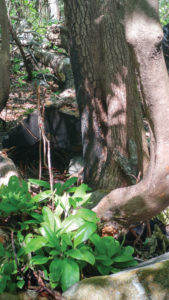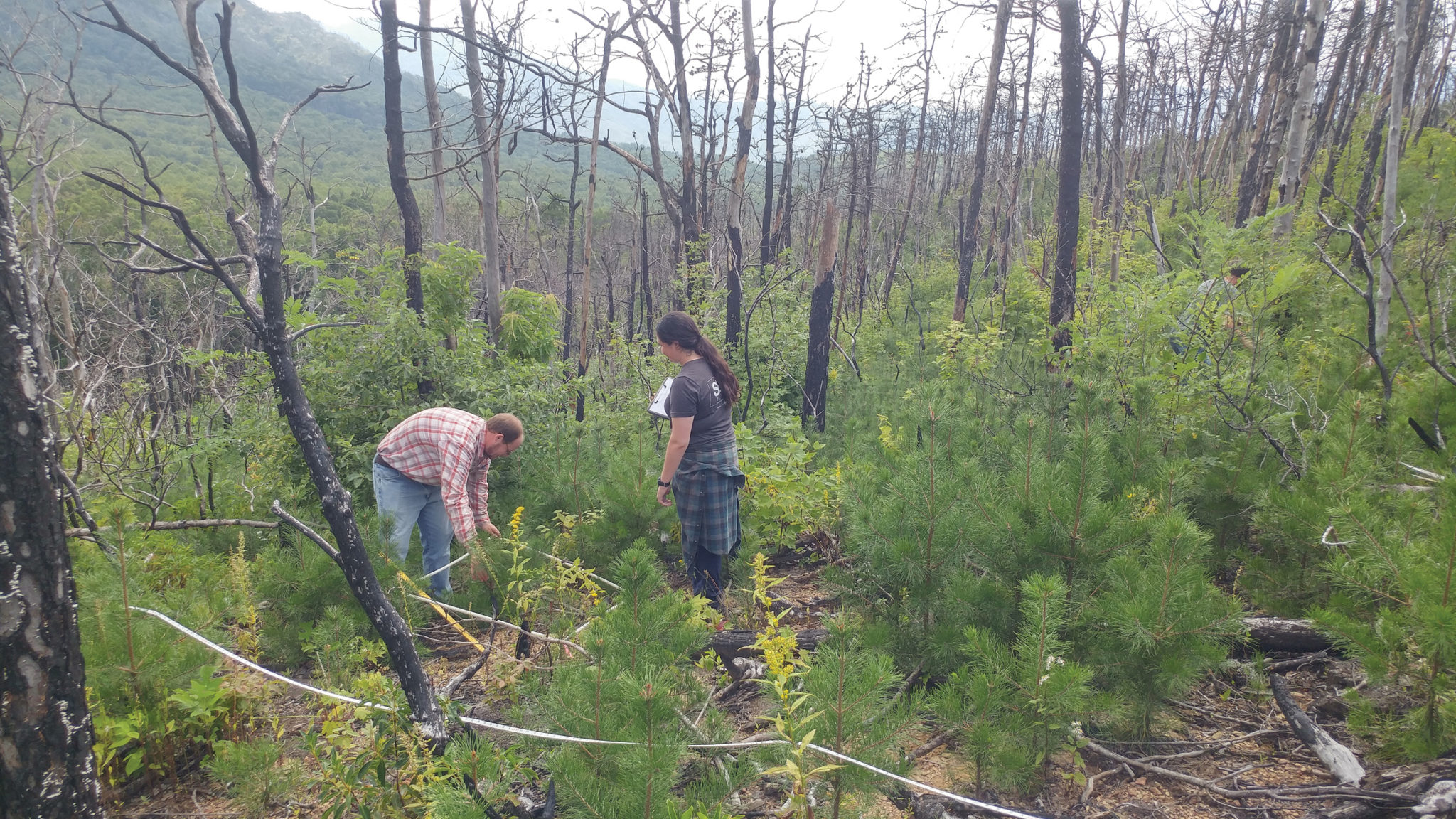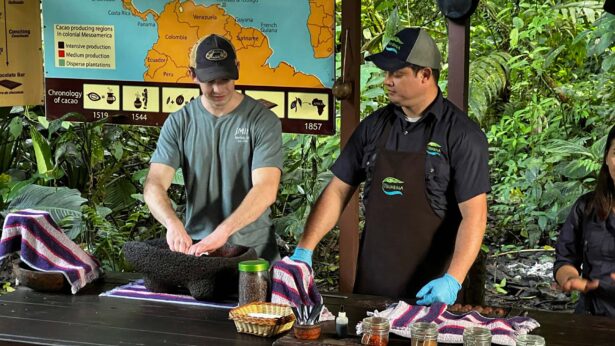By Amy Blakely
Photos by Adam Ozment and Courtesy UTIA
Portraits by Yasmin Murphy
During a forest fire, plants and animals are like soldiers in a war. Even though some individuals fall, nature’s army perseveres. It recoups and then rallies, emerging stronger and more diverse than ever.
That is exactly what has happened in the Great Smoky Mountains National Park since the wildfires of November 2016 charred 16,000 acres in and around the park, damaged or destroyed thousands of homes and businesses, and took more than a dozen human lives.
Since the Gatlinburg-area fires, UTIA researchers have been chronicling the rebirth of the park’s flora and fauna. Among them: Joe Clark, an adjunct professor and a U.S. Geological Survey research ecologist, who was able to keep tabs on a group of bears in the fire zone to see how they fared during and after the blaze; and Jennifer Franklin, a professor of forestry, wildlife and fisheries, who has been studying how trees and other vegetation have rebounded in burned areas.
Bears: ‘Just another day at the office’
When the Gatlinburg-area fires hit, Clark and his team wondered what would become of “their bears.”
They were involved in an ongoing study looking at bear movement and human-bear interaction and had placed collars equipped with GPS tracking devices on more than 20 bears in the Smokies.
About 11 of the collared bears lived in the fire areas, and Clark and his team were able to use satellite technology to track the bears in real time via computer. The researchers were able to see how the bears moved during and after the fire, where they sought food and whether they stayed in their home range or relocated.

Having the study underway at the time of the fire “was all pretty serendipitous,” Clark says.
Researchers expected to see that the bears had fled the fire area or moved from the charred land.
Surprisingly, he says, “they didn’t do either. They pretty much just stayed put and hunkered down. The fire rolled over them and past them and around them.
“We were expecting big things,” he says. “But it was very ho-hum. The bears kind of acted like it was another day at the office.”
The bears appeared to have found safety in wet areas and rocky areas that escaped flames. Others simply remained in their dens.
“The fire was during a time when some of the bears were hibernating,” Clark says.
In the immediate aftermath of the blaze, Clark and his team tracked one of the bears to its den in a burned area. They tranquilized the bear so they could examine it. The animal had suffered some minor burns, but it didn’t even require treatment.

Among the animals in the study, “we had no mortalities,” Clark says. Throughout the fire area, Clark says he knows of only two uncollared bears that succumbed—one that died in the fire and another that had to be euthanized due to injuries.
Soon after the fire was extinguished, the bears began moving into the burned areas, possibly searching for carrion—animals killed by the fire—to eat.
While the bears tended to avoid the most severely burned areas in the year following the fire, that’s been changing as time has passed. The fire felled trees, which has opened the forest canopy. With the increased sunlight, the area is producing an abundance of berries, a great food source for bears.
The American chestnut used to be a staple of the bear diet, but the tree was nearly eliminated by blight fungus in the first half of the 20th century. As chestnuts became less plentiful, bears began relying more heavily on acorns. The abundance of acorns varies with the weather, and during years when the nuts are sparse, bears suffer.
The new supply of berries has supplemented the bears’ buffet.
“I expect more benefits in coming years,” Clark says. “Blueberries. Blackberries. More diversity of food.”
Trees, shrubs thriving again

Franklin has been studying the post-fire life, death and rebirth of trees and plants, including oak, pine, American chestnut, rhododendron and red maple.
Whether burned unexpectedly in a wildfire or intentionally in a controlled burn, the forest is a phoenix; even in the badly burned areas of the Great Smoky Mountains around Gatlinburg, trees and other vegetation are returning in abundance.
“You go into these burned areas today, and they are thriving,” she says. “They are full of berry bushes, sprouts, seedlings … they are just a thriving ecosystem. It’s young and thriving.”
Oak trees, one of the most prevalent species in the low- and mid-elevations of the Great Smoky Mountains, typically drop their acorns in September or October. When a low- or moderate-intensity fire sweeps through an area before the acorns drop, the nuts fall normally, and trees regenerate from those seeds. But when fire hits after the acorns drop, the nuts—and the trees that would have grown from those nuts—are destroyed.

During the Gatlinburg fires, high-intensity fires decimated some oak-covered mountaintops. Yet those trees are rebounding.
“The trees’ root systems survived,” Franklin explains. “Those oaks put up the most sprouts of any species, but there were really no seedlings.”
The American chestnut, which has been rebounding since the blight fungus nearly wiped it out, is resprouting strongly in areas swept by high-intensity fire.
Pine trees, including the short-leaf pine, pitch pine and Table Mountain pine trees, are also coming back in abundance. For these trees, fire is a necessary part of life. Pines produce cones that can stay shut on the tree for decades—until a fire comes through and melts the resins that keeps the cones shut. Once these cones open, they often produce multiple seedlings.
“If we never had any fires, you really wouldn’t see many pine. It’s really a renewal process for the pine.”
Franklin says rhododendron are “zombie trees.” Post-fire, many of the woody, flowering shrubs appeared to survive, but internal damage eventually caused them to die—only to resprout from their roots.

Similarly, red maples—those trees that paint the mountainsides with beautiful orange and crimson colors in the fall—didn’t appear to show much injury in the immediate aftermath of the blaze but began dying two to three years after the fire.
“Fire eventually catches up with them,” Franklin says. “This kind of delayed mortality is fascinating to me.”
Researchers suspect fire opened wounds that allowed fungi to invade and kill the trees.
But even this death is breeding new life. The decaying trees have become habitat for other plants and fungi on the forest floor while new red maples sprout from the roots of their fallen ancestors.
In 25 years, visitors to the area won’t see many battle scars from the fires, Franklin says. Rather, they’ll find young stretches of forest thriving with a diverse army of flora and fauna.
Though fires—like those that blazed around Gatlinburg—are often devastating for humans, they provide a necessary reboot for nature.
“Fire is part of life, part of the ecosystem,” Franklin says. “We need to learn how to live with it and better manage it for the good of all.”



